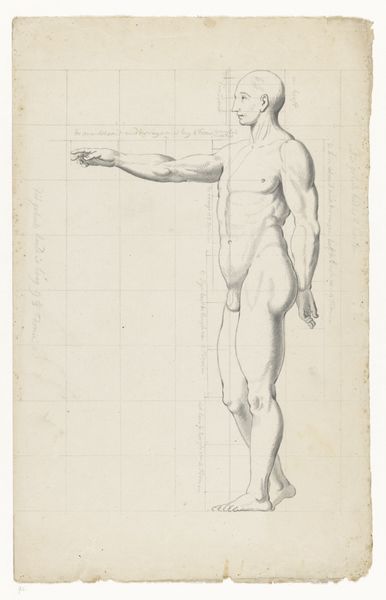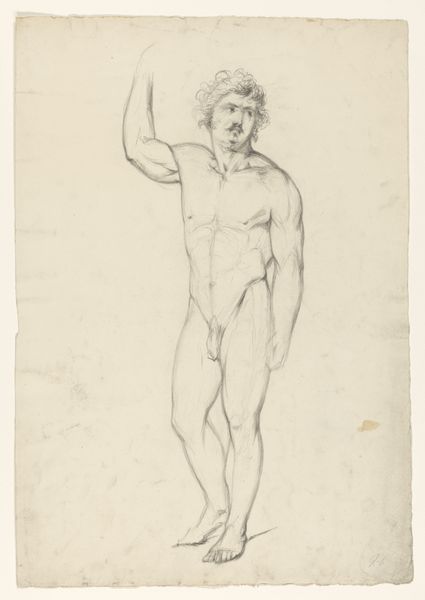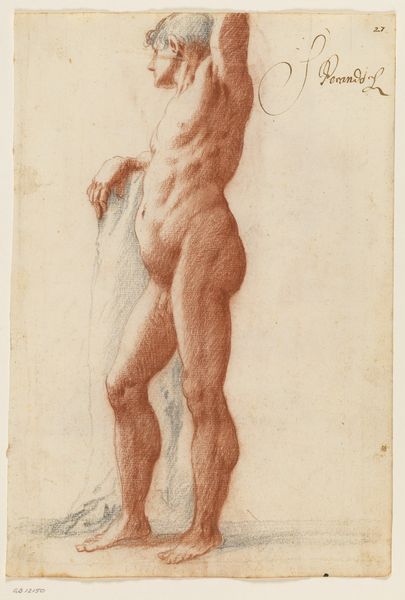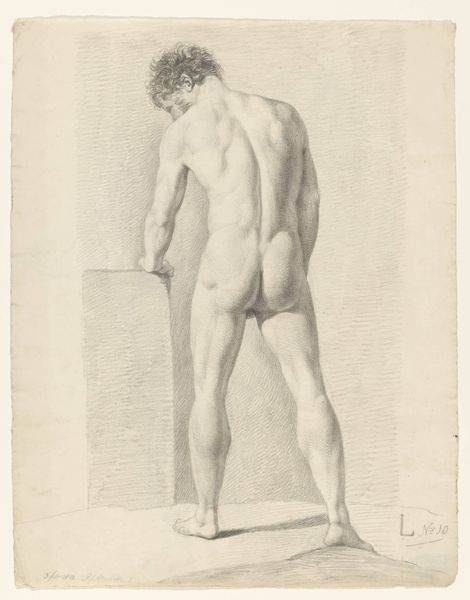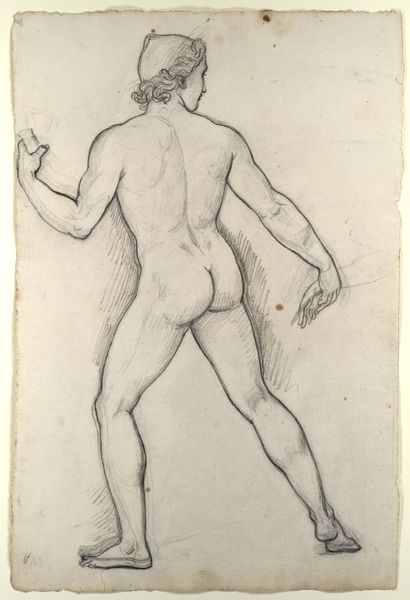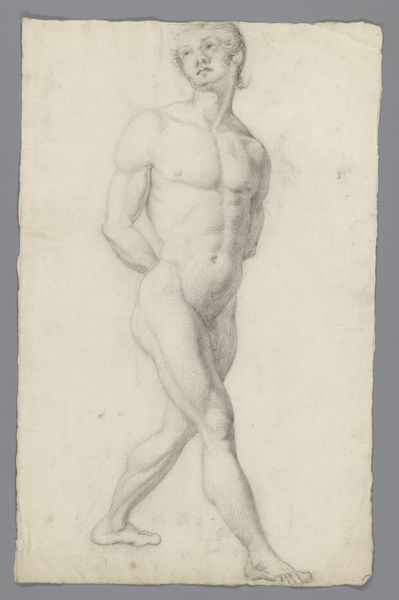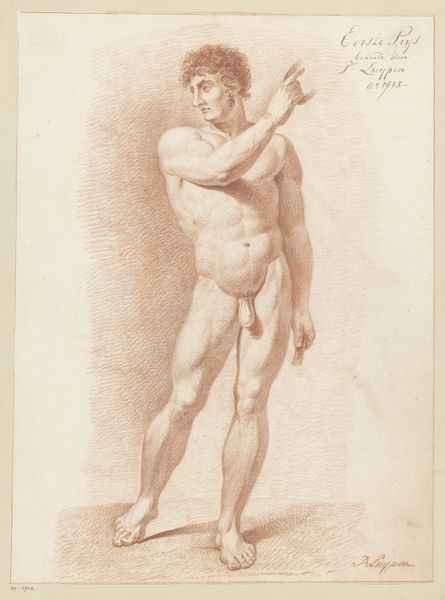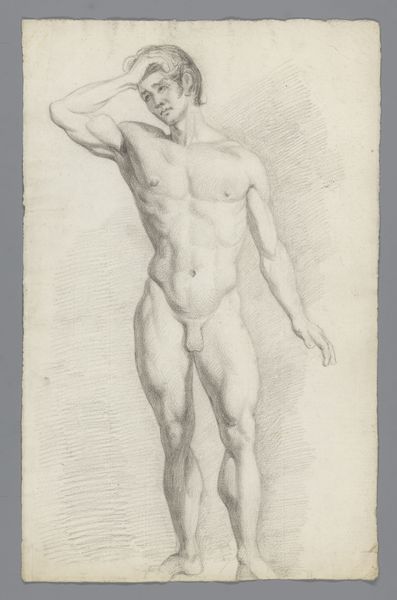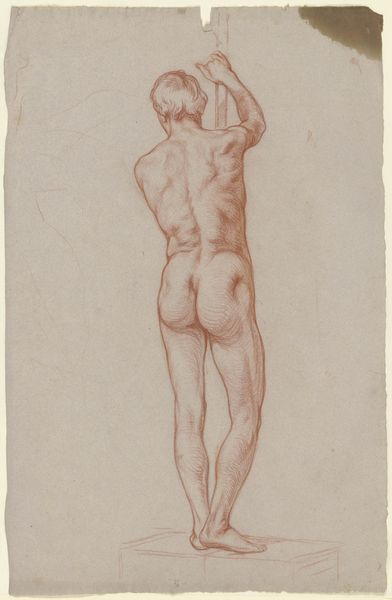
drawing, paper, pencil
#
portrait
#
drawing
#
pencil sketch
#
figuration
#
paper
#
pencil
#
academic-art
#
nude
#
realism
Dimensions: height 433 mm, width 275 mm
Copyright: Rijks Museum: Open Domain
Curator: At first glance, I see this drawing as remarkably utilitarian—the figures almost appearing to be components in a technical drawing. Editor: That’s interesting. Let me offer some background. What we are viewing is entitled "Naaktstudies van vrouw en man, op de rug gezien," which translates to "Nude studies of a woman and man, seen from the back." It's a pencil drawing on paper made by Jan Brandes sometime between 1787 and 1808. What stands out for me is how it presents a normalized vision of the nude human body, and how academic settings helped dictate the style and subject of Brandes' artwork. Curator: Agreed, this clearly served some instructional purpose, perhaps within an artistic academy of the time. You can almost trace the process—the visible gridlines acting as scaffolding, the layered pencil strokes carefully building up the musculature. Were such nudes common teaching tools in art education? Editor: Absolutely. Representing the nude figure was central to academic training, considered essential for history painting and other prestigious genres. Studying anatomy allowed artists to demonstrate their skills but also participate in larger societal conversations around the human form, beauty standards, and even science. This piece shows us those politics of imagery right here. Curator: I’m curious, too, about the paper itself. See how it’s slightly torn and aged? These details give the drawing an objecthood beyond just its representational value. We aren’t only seeing figures; we’re also seeing evidence of the artist’s studio, of art being produced as an exercise, not just a grand statement. Editor: Yes, it is fascinating to consider its context of creation. Brandes made this piece to sharpen his skills, contributing to an educational agenda deeply embedded in societal norms. This kind of piece wasn’t just about creating a perfect body on paper; it was part of a broader system that shaped artistic talent. Curator: Thank you; it gives a deeper meaning to such a simple composition. Editor: It was my pleasure!
Comments
No comments
Be the first to comment and join the conversation on the ultimate creative platform.

